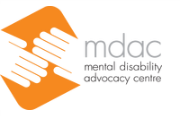3(C). Making litigation strategic
Ensuring the strategic impact of litigation requires planning at each stage of case management, namely:
- Preparation,
- Conduct, and
- Post-decision implementation.
In the preparation phase, lawyers should identify a clear objective for the litigation and situate this objective within a wider national, regional and/or international legal and social context. For example, a national law may not contain a justiciable right to live in the community for people with disabilities, but if there is no national impetus for change among domestic civil society, it may not be appropriate to choose to litigate the issue immediately. Instead, it may be more effective to litigate particular elements of this right, for example access to specific services. That said, much will depend on the local context, and there is often no single correct approach.
In determining which cases are likely to achieve a strategic impact, lawyers should work closely with civil society organisations to identify their primary concerns. A partnership could be a long-term cooperation throughout the course of litigation. This cooperation can strongly influence the successfulness or otherwise in achieving the objectives of litigation and should be used to develop a comprehensive approach, as well as drawing on a broad range of resources to support the strategy.
To achieve strategic impact, the issues that are chosen for litigation must represent broader, systemic problems or a failure to implement specific human rights provisions. A number of factors can be considered, including:
- Estimates of the numbers of people experiencing similar human rights violations who might benefit from a judicial remedy being established;
- The instrumental value of certain claims in achieving broader reform (e.g. litigating the right to access court directly as a way for people with disabilities to challenge their placement under guardianship);
- The potential for the judiciary to establish positive obligations on government entities to protect or fulfil certain rights (e.g. the obligation to provide individualised services);
- The existence of promising alternatives which can be used to persuade judges of the feasibility of granting a remedy (e.g. in-home support services to enable people with disabilities to live independently);
- Legislative or policy reforms that fail to implement human rights standards, and where positive judicial determinations may have an impact.
Once the issue has been defined within a larger context, the lawyer must determine whether the facts presented by a particular client are likely to support the objectives of strategic litigation. In many cases, it may be that litigation will have a beneficial impact for the person concerned, but nevertheless fails to support the strategic objectives. In these cases, it is important that lawyers have a clear plan about whether they take on such clients, or refer them elsewhere.
As with any client, it is important for the lawyer to assess the likely impact of litigation on them. This is even more important in cases seeking a strategic impact. Lawyers should ensure the client is aware of the broader context and that their case will contribute to a broader strategy, so that they can give free and informed consent to this. It is essential to assess and mitigate any risks of undertaking litigation on behalf of the client, in close cooperation with them and with NGOs.
Client care and planning for non-legal support are likely to have a significant bearing on the outcome of litigation. When litigating the right to live in the community, the lawyer will be representing a person who is likely to be vulnerable to exploitation or abuse, and who has been without support for some time. Whilst it is not the lawyer’s job to provide numerous non-legal supports to their client, it is important that they can provide clients with information on accessing a variety of supports they may need, bearing in mind their specific disability-related needs and the predictable effects of litigation which may take several years. Aspects of the client’s identity such as their gender, age, health status, race etc. may give rise to different challenges in this regard which must be separately identified and addressed.[2]
Once the client care issues are in place, lawyers can consider the appropriate forum for bringing litigation. This may be a local court, an appeal court, an equality body, a constitutional court, and so on. It may be an international court or tribunal, or a UN treaty body. The choice will depend on the facts of the case and the legal system. Each forum will have advantages and drawbacks in meeting the objectives of strategic litigation. Prompt questions which the lawyer may find useful to answer include:
- How long will the tribunal/court take to reach a final determination? This can have a serious effect both on the client and on the financial sustainability of the litigation.
- Can the tribunal/court hear testimony from the victim or witnesses? What forms of evidence do they accept? Have they heard any cases from people with mental disabilities before? What prejudices might the judges have? What can the lawyer do to ensure that judges do not dismiss evidence from their client as lacking credibility?
- What remedies are available? The lawyer should be as specific as possible in requests for relief and be sure to identify the body which can grant the most appropriate remedy, both for the client, and with a view to the larger strategic objective.
- Does the tribunal/court already have jurisprudence in this area? If not, might they be amenable to developing it? In these situations, it is important to assess the risk of a negative outcome if it is unclear how the particular tribunal/court may decide. A different tribunal/court may offer more chance of success if this involves building on pre-existing jurisprudence.
- Does the tribunal/court have a friendly settlement procedure? Is this optional or mandatory and what are the consequences of engaging in such a procedure? For example, some settlement procedures prohibit any publicity around the final settlement which may have serious consequences for any planned advocacy strategy. Some govern only compensation, while more useful procedures allow space for the authorities to promise to change or properly implement the law.
- Does the tribunal/court offer interim measures (a temporary solution) if the violations are on-going and where the client is at risk of irreparable harm, for example living in an institution where it is known that the staff beat the residents?
- Is the judgment of the tribunal/court legally binding? On whom? How are judgments enforced? Is there a follow-up or monitoring mechanism attached to the judgment? Which NGOs are available to carry out post-litigation advocacy?
Lawyers should consider whether they have the required resources to properly conduct the litigation. Sometimes this means finances, and often it means people resources: NGO activists, legal advisors, and people to support the client. If resources are lacking, fundraising may be necessary.
At all stages, the lawyer should consider cooperating closely with NGOs or other members of civil society as they might be able to provide non-legal support to the client, as well as insights on the conduct of the litigation. When working in partnership, roles should be clearly assigned to each participant based on their areas of expertise. These may include gathering evidence, conducting the litigation, undertaking national level policy advocacy, providing non-legal support to the client, managing media relations and so on.

